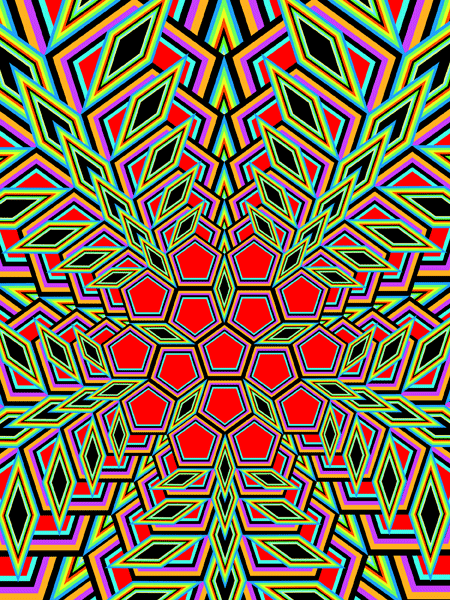
“Music of the Spheres,” ratio-driven explanations, 12-note scales, circle of fifths, meantone tuning, the Greek genera... music and math have been close acquaintances for centuries, but perhaps never has music been analyzed in such a displayable fashion. Three professors -- Clifton Callender of Florida State University and Ian Quinn and Dmitri Tymoczko of Princeton University -- have devised a method that places musical language into contemporary geometry. Expanding on earlier work by Tymoczko (which is dealt with nicely by Julie Rehmeyer on Mathtrek here), the three profs published “Generalized Voice-Leading Spaces” in the April 18 issue of Science, and the work has been widely praised. As Rachel Wells Hall of St Joseph's University claims, it “stands out both for the breadth of its musical implications and the depth of its mathematical content.” Assigning mathematical structure to families of chords, notes, scales, and using levels of abstraction, the "geometrical music theory" places music into "quotient spaces," ultimately generating geometrical figures.
Callendar, quoted on EurekAlert, tries to layperson the theory:
Imagine being near the peak of a mountain and needing to get to the immediately opposite location. You could proceed clockwise around the peak, counter-clockwise, or directly over the peak. These same three paths represent unique types of motions between major and minor triads in the space of three-note chord types, which is a cone. In fact, these motions and chords have been ubiquitous in Western music since medieval times to the present day.
Callender, you had me at “Imagine...”
Speaking in “future of music” terms, a few interesting questions arise:
- Are there chords and scales floating in geometric space that are rarely used or have yet to be discovered?
- What applications can the theory have in differentiating the superiority of certain musical styles (perfect for jazz snobs who can now mathematically prove their preferred racket is structurally more complex than the preferred rackets of rock, reggae, blues, techno, etc.)?
- Can the theory be applied to Eastern music, or is it just amenable to Western music?
- Can it translate Japanese noise legend Merzbow?
- What good is a geometry-based theory when everyone knows all songs employ the same three chords?
As far as practical applications are concerned, Tymoczko, courtesy of Scientific Blogging, says, “You could create new kinds of musical instruments or new kinds of toys. You could create new kinds of visualization tools -- imagine going to a classical music concert where the music was being translated visually. We could change the way we educate musicians.” Um, I guess he’s never played anything on Windows Media Player?
Tymoczko adds, “The most satisfying aspect of this research is that we can now see that there is a logical structure linking many, many different musical concepts. To some extent, we can represent the history of music as a long process of exploring different symmetries and different geometries.”
Although some will argue that such a deep understanding renders art emotionless or unlovable, that line of reasoning couldn't be further from the truth. Theory lovers know that base understanding only makes something cold if you are cold. Delving and appreciating underlying foundations and multiple levels of anything can lead one to beauty unimagined by shallow surface-dwellers. Imagine the satisfaction you will get when your “Man, this part of Rush's ‘Spirit of the Radio’ kicks ten kinds of ass!” is coupled with an appreciation of its categorization of “OPTIC symmetries?” Forget math rock; mathletes are your new gods!